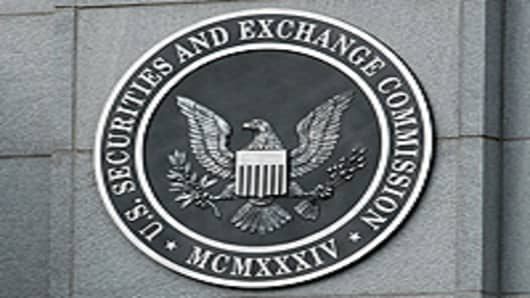If a company or individual gets what's called a Wells notice from the Securities and Exchange Commission, (SEC) they won't be very happy to say the least.
But who might get one and what do the signify? CNBC explains.
What is a Wells notice?
It's a letter, usually from the SEC, that says a publicly traded company and/or person from the same firm—has been investigated and that there is probable legal action planned for violating federal security laws.
Those violations can include insider trading and/or misleading investors.
Individual investors/traders can also receive a Wells notice.
Before the Wells notice is sent, the SEC has conducted an investigation by subpoenaing witness and documents. By doing so, the company or person is made aware that an investigation is ongoing and that a Wells notice could be coming.
The time between the SEC investigation and the sending of the Wells notice can be from 5 months to a year, according to analysts.
Is a Wells notice required by law?
No. Regulators are not legally required to send a Wells notice to any company or person under investigation. However, SEC and/or the Financial Industry Regulatory Authority (FINRA) usually send them out.
What happens after a Wells notice is sent?
Once a person or company receives a Wells notice, they have the opportunity to 'contest' it. They can make what's called a Wells submission—where a prospective defendant can speak directly to the SEC prior to the start of regulatory proceedings and make their case as to why they shouldn't be prosecuted.
While it seems that a submission should be an automatic response to a Wells notice, they are not always done.
The reason is that a Wells submission is not confidential and anything that is stated in the submission can be used against the company at the hearing. And a Wells submission is discoverable—that means it can be subpoenaed and made public to be used in later civil litigation by private citizens.
How many Wells notices have gone out over the last few years?
According to the latest SEC's statistics, none were sent out from 1997 to 2001. In 2002, 11 were sent, followed by 13 in 2004 and 31 in each of the years 2004 and 2005. There were 18 in 2006 and 20 in 2007.
What is the history of a Wells notice?
The name "Wells notice" is derived from the Wells Committee which proposed in 1972, the process of sending out notifications on investigations. This SEC committee was named after John A. Wells, a corporate lawyer, who was the committee head.
The Wells Committee was set up in 1972 by then SEC Chairman William Casey, to review and evaluate the enforcement policies and practices and to make changes—such as the Wells notice.



